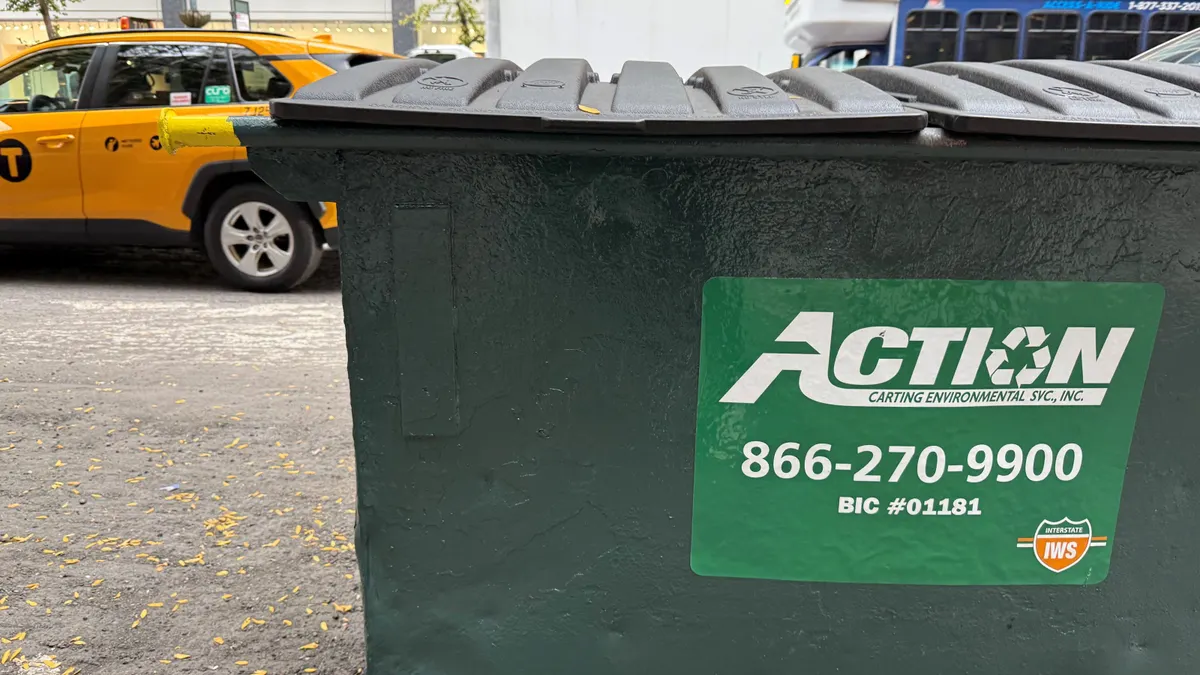Dive Brief:
- The closure of Ardagh's glass bottle manufacturing plant in Milford, MA has begun to cause what one state Department of Environmental Protection (DEP) official referred to as a "domino effect," leaving an estimated 2,000 tons of municipal glass per year without an end market. Strategic Materials had been supplying the majority of Ardgah's cullet and has now told local material recovery facilities it can longer take their material.
-
"That specific plant was the highest cullet user probably in the nation, so it was a big hit for us, because for all of our plants in the Northeast that was our primary outlet," Laura Hennemann, Strategic's director of marketing, told Waste Dive. "We've had to temporary curtail our glass recycling-bound supply from the municipalities and we are aggressively looking for other outlets."
- If this leads to temporary disposal, waivers will be required from the DEP. The agency has been working to facilitate a solution and reminding people of its existing beneficial use determination standards. A webinar was also hosted with the Northeast Resource Recovery Association (NRRA) to highlight potential for using processed glass aggregate in construction projects.
Dive Insight:
This fairly abrupt news has sent ripples through the Northeast recycling market, leaving generators without what had been a steady option for many years. The situation isn't much better north of Massachusetts, and sources indicate the next best option heading westward might be New Jersey or Pennsylvania. New York has also been experiencing its own challenges with glass.
Because of the material's weight, and decline in value when collected via single-stream recycling versus source-separation or container redemption systems, end markets are even more regional for glass than other commodities. The formation of the Glass Recycling Coalition (GRC) in 2016 was seen as a step toward better collaboration, and the group remains engaged in these local conversations.
"We will be doing what we can with all parties and all members to help begin bridging the demand gap for glass supply in the region," said Glass Packaging Institute President Lynn Bragg, on behalf of the Glass Recycling Coalition, in a statement. "The solutions have to be sustainable and supportable to make the progress we need."
DEP is a member of the GRC's government advisory council, and that may have helped the agency be more responsive to this Ardagh news. Though with a mid-January closure announcement, that didn't leave much time for advanced planning. The issue was raised at a Jan. 25 agency meeting and the webinar followed on Feb. 9.
During it, the NRRA described a growing and positive response from Northeast communities after hiring a mobile glass crusher. They outlined the process of amassing material at various drop-off sites, talked through specifications, and shared examples of construction projects that have used processed glass aggregate (PGA). In 2017, 10 NRRA member communities in three states recycled more than 10 million pounds of glass into PGA at $30 per ton.
"If you can collect the material, we can get it crushed," said NRRA Executive Director Mike Durfor. "We think the crisis that's arisen is going to be an opportunity to get more people on board."
Creating demand for PGA among state and local transportation agencies or contractors is a priority, with its environmental properties seen as a selling point. Strategic and the GRC view any beneficial use as preferable to disposal.
Expanding demand among manufacturers is also still a priority. Ardagh cited a decline in mass beer sales as the reason for its local closure, but the recycling industry sees plenty of opportunity for demand pull if manufacturers increase the amount of post-consumer cullet they use.
"We know that glass is valuable, we know that it's a viable market. It's just a matter of how do we connect the dots," said Hennemann. "Honestly, the manufacturers need to step up and help give back to the local communities."










